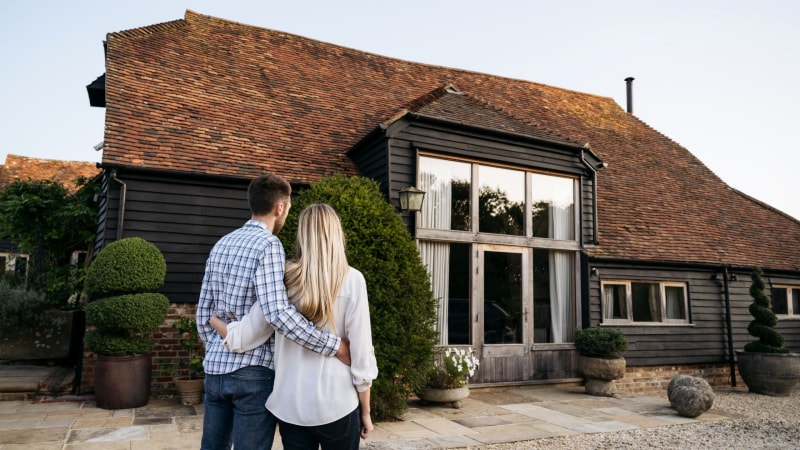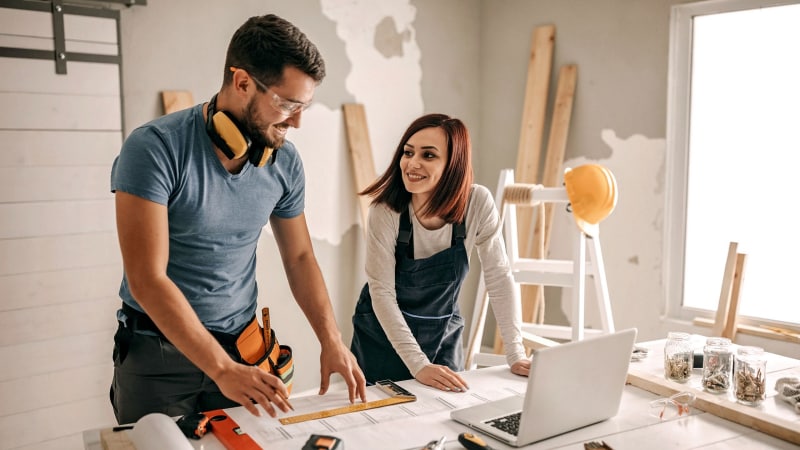From double-wide to double-take: take a look at the new prefab homes

This article is for educational purposes only. JPMorgan Chase Bank N.A. does not offer this type of loan. Any information described in this article may vary by lender.
Prefab is short for prefabricated housing, meaning the house you’re looking into buying is mostly built in a factory before it’s finally positioned on your property. It’s a term that represents several offsite ways of constructing a home. Two popular forms are panel building and modular building. Prefab homes require less time and money to build and are typically more sustainable than traditional residential or stick-built construction. Stick-built construction is put together onsite piece by piece and is probably the type of home construction you’re most familiar with.
According to the National Park Service, some of the first prefab homes were constructed during the Gold Rush in the 19th century for miners. Their popularity continued into the early 20th century. The foundations of these houses were constructed onsite using brick, concrete and masonry. The rest of the structure was made offsite by a manufacturer for a fixed price.
At the time, Sears was the main American supplier for prefab homes but shut down their Modern Home delivery service in 1940 after operating for about 30 years. Today, a simple Google search can find you an online retailer to build customizable prefab homes.
What is a prefabricated home?
In contrast to traditional residential construction where everything is built onsite, piece by piece, a prefabricated home is made from already assembled components in a factory that are then transported to a home lot. Once the pieces are at the home lot, they are synthesized to make the full house structure.
Types of prefabricated homes
There are two common ways to build a prefabricated house:
Panel building
Panel building is done by laying the base of the house, then dropping each section of a wall in, one piece at a time. This is better for larger structures since it allows for higher ceilings and bigger spaces and is a budget-friendly option since it's often less expensive to transport the materials in panels. In some cases, the panels have household fixtures like plumbing or dishwashers pre-attached, which can save time and money in the building process.
Modular building
Modular builds have box-like structures placed together and secured to make the whole house. Picture stacking a bunch of building blocks next to and on top of one another, like when you were a kid. Modular builds are a bit more difficult to transport than panel builds and do not come with built-in features.
It’s important to note that additional household features like decks, porches or garages can’t usually be transported with a modular build. In this case, you might see a combination of panel and modular building for more customization.
Prefabricated homes vs. manufactured homes
Prefabricated homes and manufactured homes are similar because they’re both built in a factory. Prefabricated homes, however, are different than manufactured homes because they aren’t delivered as one complete home, while manufactured homes are.
Manufactured homes
Manufactured homes do not have any onsite construction. They’re built on a steel frame and wheeled to their destination. This destination usually has a base made of concrete where they drop the home. Sometimes, the wheels are removed from the home and other times they are kept and covered up.
Manufactured homes do not have strict regulations and are usually of lesser quality than prefab homes. They do not appreciate over time and are usually considered personal property rather than traditional real estate.
What to know when buying a prefab home
Here are a few things to keep in mind when buying a prefab home:
- Prefab homes are faster to build.
- They can be just as durable as traditional stick-built homes.
- They are cheaper than stick-built but there are often costs beyond the main structural build — depending on what features you’d like to add on.
- Not everyone understands what a prefab home is, which may make it harder to sell.
- Prefab homes can be more sustainable! The factories that build them are more likely to use upcycled materials, eco-friendly packaging and deliver exactly what is needed … meaning less waste.
- Although the process looks a bit different than stick-built homes, you can still finance a prefab or manufactured home with a traditional mortgage.
There’s a reason prefab homes are becoming more and more common — the durability, price tag and environmental impact seems to beat out traditional stick-built real estate. They are relatively customizable and fast to build. Remember to keep in mind the potential difficulties of reselling your home and factor in additional costs that will likely result in addition to the base structure of the house.



